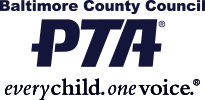
PTA Council Diversity & Inclusion Committee:
diversity@bcptacouncil.org
Maryland PTA Diversity Presentation
How diverse is your community?
How inclusive are you as a PTA leader?
Even more important what does “Diversity & Inclusion” mean to you?
It’s important to understand these terms so you can make sure that all members of your community feel welcome and engaged in your PTA. We as PTA leaders must remember that our members are the essence and strength of our PTA. By embracing diversity and being inclusive, we can not only grow our membership, we will have stronger PTAs and better represent the needs of every child in our community. Diversity can mean a lot of different things. Broadly defined, diversity means respect for and appreciation of differences in ethnicity, gender, age, national origin, disability, sexual orientation, education, generations, political philosophy, socioeconomic background, religion , skills, abilities and all the other unique differences that make each of us who we are.
Embracing diversity and ensuring that everyone feels welcome, appreciated, respected, valued for his or her distinctive skills, experiences and perspectives and has an opportunity to fully participate in the goals of the PTA is critical to the success of the PTA. We encourage you as PTA leaders to put in your best effort to create a diverse workforce of volunteers that truly represents the diversity in your community and create an inclusive environment with opportunity for the talents of all community members.
Achieving a diverse and inclusive environment is an ongoing process. Start the year by making sure that Diversity and Inclusion is an intrinsic part of your PTA. Welcome and engage community members from various backgrounds and of all skill sets at “Back to School” events. Have conversations that will make them feel welcome, respected, valued and “included” by the PTA. Embracing Diversity and creating an environment of inclusion will enrich your PTA with many invaluable resources.
By removing barriers to inclusion we can promote student success.
|
Strategies for Increasing Diversity in Your PTA by Caryl M. Stern Here are some additional strategies for creating an inclusive environment. Use these strategies to recruit and retain a diverse group of parents.
|